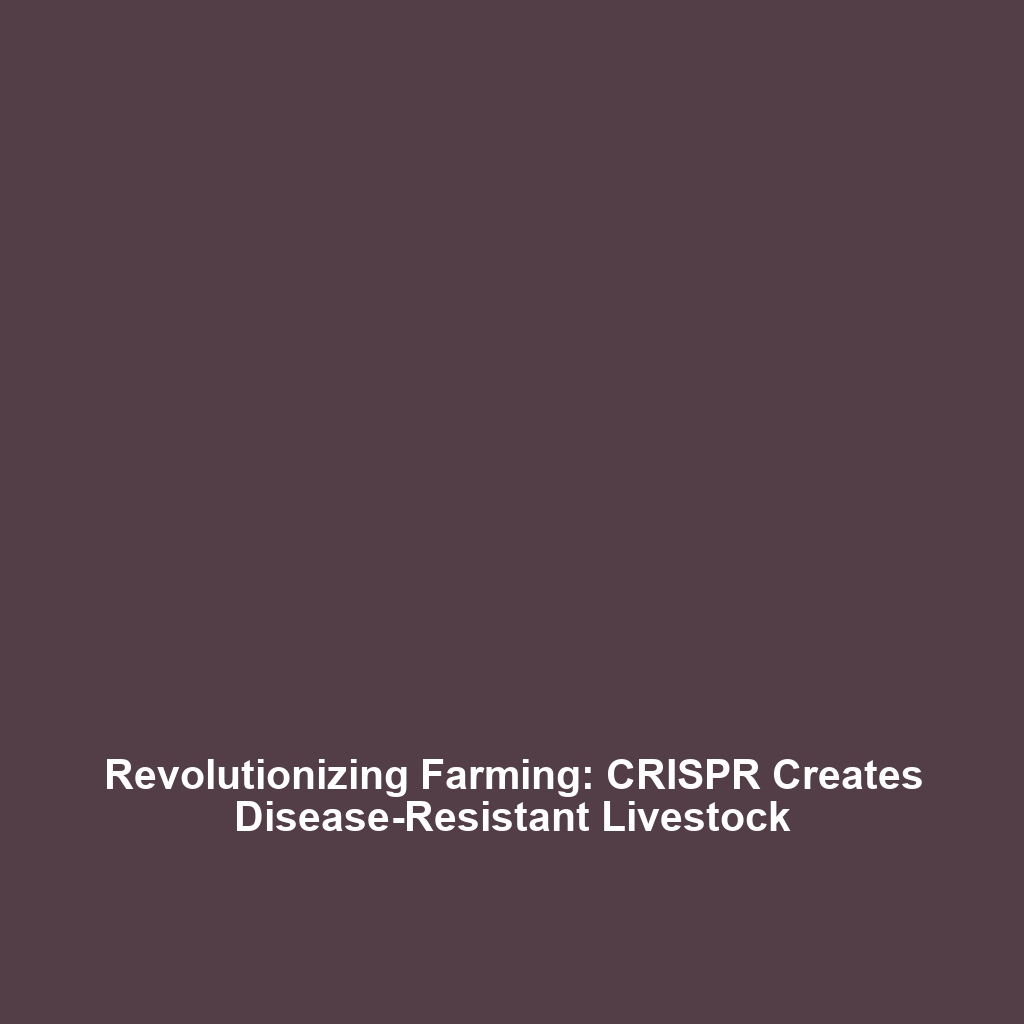Creating Disease-Resistant Livestock Through Gene Editing
Introduction
Creating disease-resistant livestock through gene editing represents a pivotal advancement in agricultural biotechnology. By utilizing CRISPR gene editing, researchers are not only enhancing animal health but also boosting food security in a rapidly changing environment. With livestock diseases imposing economic burdens on farmers and threatening food production, this innovative approach is vital for sustainable agriculture. This article delves into the significance of this technology within the broader context of CRISPR gene editing and its potential to revolutionize animal agriculture.
Key Concepts
Understanding the principles of creating disease-resistant livestock through gene editing involves several key concepts:
- CRISPR Technology: Clustered Regularly Interspaced Short Palindromic Repeats (CRISPR) allows precise editing of DNA sequences, making it possible to introduce specific traits into livestock.
- Genetic Resistance: By altering genes associated with disease susceptibility, researchers can develop livestock that are less prone to infections, thereby enhancing overall herd health.
- Ethical Considerations: While the technology holds great promise, ethical considerations surrounding gene editing in animals, including animal welfare and ecological impacts, must be addressed.
Applications and Real-World Uses
The applications of creating disease-resistant livestock through gene editing are extensive. Here are significant real-world uses:
- Infectious Disease Resistance: CRISPR has been used to develop pigs resistant to Porcine Reproductive and Respiratory Syndrome (PRRS), significantly reducing mortality rates.
- Improved Animal Welfare: By reducing disease susceptibility, gene editing contributes to better living conditions for livestock, prompting more humane farming practices.
- Sustainable Production: Enhancing disease resistance in livestock can lead to less reliance on antibiotics, promoting healthier meat and dairy production systems.
Current Challenges
Despite its potential, there are several challenges associated with the implementation of creating disease-resistant livestock through gene editing:
- Regulatory Hurdles: The regulatory landscape for gene-edited organisms varies globally, affecting research and product development.
- Public Perception: Misunderstanding of genetic modification technologies can lead to public resistance, impacting market acceptance.
- Technical Limitations: Precision in gene editing is critical, and off-target effects could unintentionally modify other important traits.
Future Research and Innovations
Future research in creating disease-resistant livestock through gene editing is likely to focus on:
- Next-Generation Sequencing: Enhancements in sequencing technology can improve the identification of genetic markers associated with disease resistance.
- Gene Editing Techniques: Innovations such as CRISPR-Cas9 and newer methods like CRISPR-Cas12 are expected to enhance precision and efficiency.
- Collaboration Efforts: Increased collaborations between scientists, regulatory agencies, and farmers will be crucial for developing practical solutions.
Conclusion
Creating disease-resistant livestock through gene editing stands at the forefront of CRISPR technology, offering promising solutions to enhance livestock health and sustainability. As research continues to evolve, addressing the challenges and ethical considerations will be crucial for the successful implementation of these innovations. For more information on related topics, visit our pages on CRISPR basics and sustainable agriculture practices.
